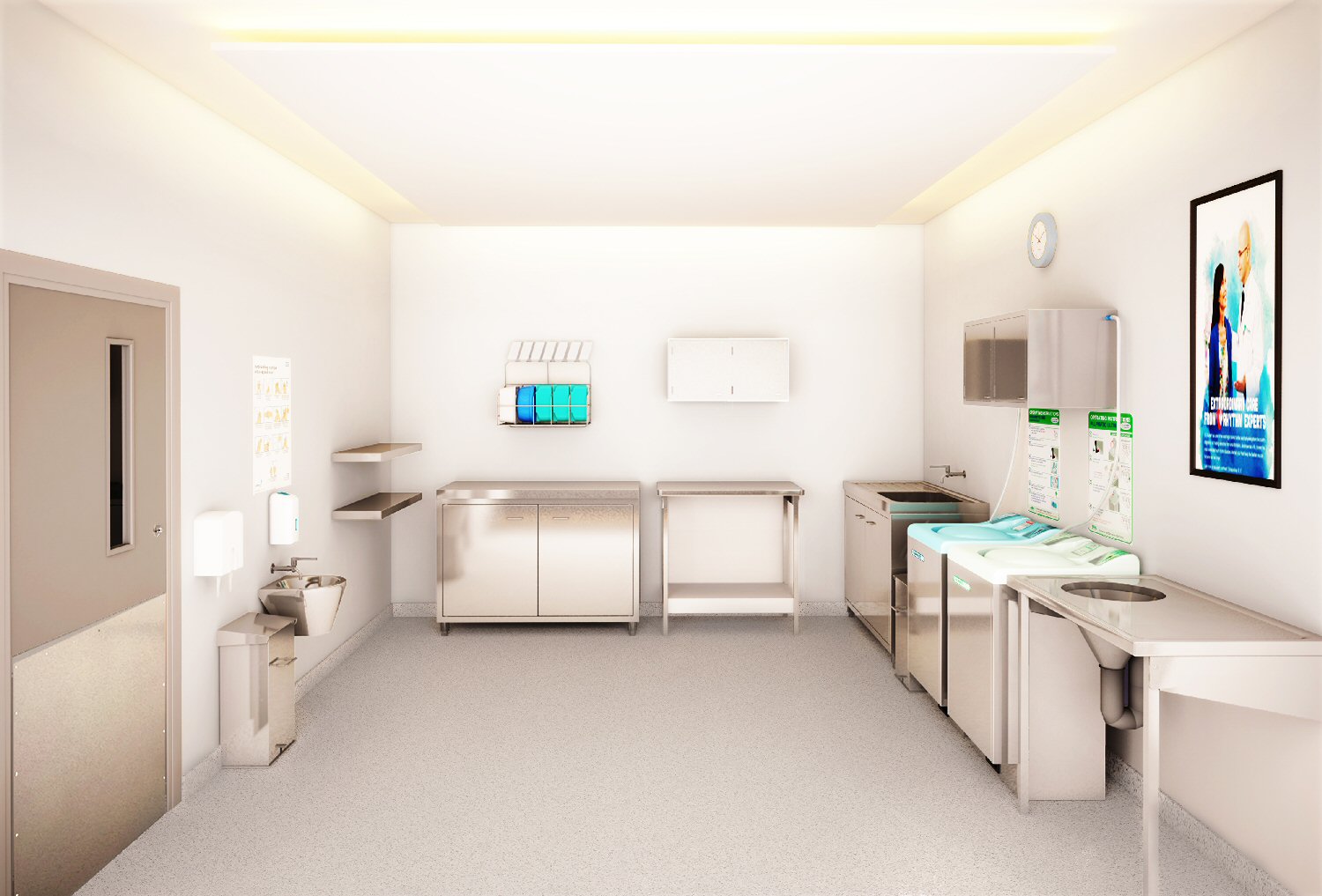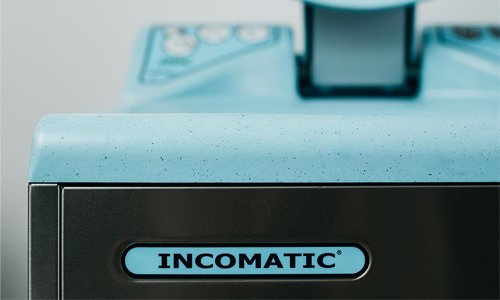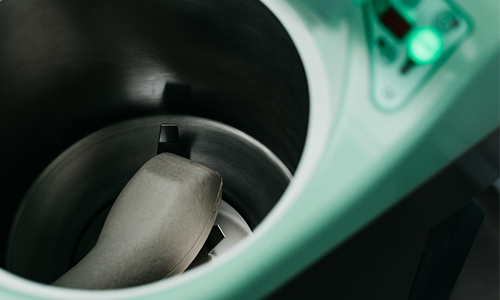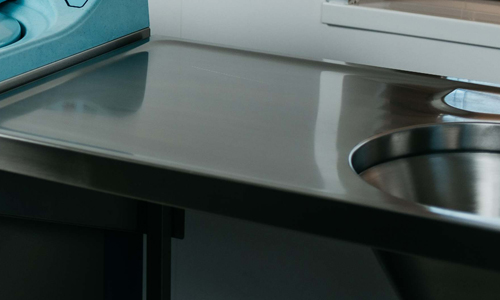Top 10 Tips for Sluice Room Efficiency
Your sluice room is in use 24 hours a day, 7 days a week. Manage these moments well, and your patients will be safe and comfortable, with more time available for bedside care from clinicians. A lack of efficiency, however, will leave service users exposed to infection, as well as further potential catastrophe for your institution and its staff.
Exceptional patient care is underpinned by scrupulous infection control procedures. Your sluice room is at the heart of these operations and insisting on quality waste management protocol behind the door is essential.
Helping your clinicians get more from their shift and dramatically reducing the chance of an HCAI outbreak, an efficient sluice room is your not-so-secret weapon. Here’s our top tips for keeping human waste management in check.
1. Make sure the sluice room is located close to the point of care.
It may seem unhygienic to keep macerators and bedpan washers near your patients, but actually, the opposite is true.
The NHS Standard Infection Control Precautions maintain that disposing of human waste close to the point of care is necessary to reduce the risk of spreading infection. The less distance human waste has to travel, the less opportunity it gives for pathogens to spread.
Ideally, a sluice room should be located conveniently, so clinicians can dispose of waste quickly. With macerators and washer disinfectors benefitting from increasingly quiet technology, this process shouldn’t disturb your patients either.
2. Plan the layout.
A sluice room should have a clear workflow, with easy and logical access to all of its features. Not only will this save your clinicians’ time, but it’ll prevent cross-contamination if fixtures and fittings are strategically placed. DDC Dolphin provide design services for architects and contractors to ensure that your sluice room is planned to perfection.
3. Invest in quality machinery.
With technology advancing, yet budgets getting smaller, medical institutions must make difficult decisions in regard to assets. Of course, every facility would choose to own the latest innovations in healthcare if they could – but unfortunately, this isn’t a luxury that every estate can afford.
Ultimately, it’s important to strike a balance between quality machinery and available funds; your patients are relying on you for the best possible care and, to that end, investing in high-calibre sluice room technology is in everyone’s best interest. They’ll be more effective at preventing infection, reliable for clinicians to use, and cost-saving in the long run.
If you’re unsure if the latest sluice room machines will be affordable, a Technology Financing Solution is a budget-friendly way to proceed. Available with 2-5 year agreements, your facility will benefit from the best arrangement to suit your needs, while still staying in control of expenditure.
4. Stay well-stocked in consumable products.
In order to stay on top of patient requirements, as well as ensuring you don’t open your sluice room to infection risks, be sure that you’re well-stocked with consumable products, such as macerator and bedpan washer disinfectant. There’s little point in using a quality product if it’s going to be poorly maintained; your machine can only provide a high standard of sanitation if you keep it topped up with the correct cleaning agents.
5. Sluice room signage can help to instil good habits.
You won’t want so many posters that your clinicians become blind to them. However, a reminder of how to adequately wash one’s hands, for example, will help to keep hygiene front of mind.
6. Stay on top of bin emptying.
Your sluice room is the pinnacle of your facility’s waste management – but it doesn’t stop once the items are thrown away and the door closes!
The NHS Standard Infection Control Precautions are specific regarding how often bins should be emptied; waste bags should be no more than ¾ full or more than 4kgs in weight before they’re removed.
7. Keep machines well-maintained.
How well would your facility cope if a washer disinfector or macerator broke down? Would it cause a pile-up of items needing to be disposed of, or sanitised? Would it mean that essential utensils weren’t clean or available when your patients needed them? Would it result in an outbreak of infection?
Breakdowns of essential machinery can cause a crisis; but you can take steps to avoid it, as well as minimising the effects of unpredictable events. Should you choose to take out a service contract, you’ll have a fully-trained expert at your facility, in the quickest possible time – dramatically reducing the downtime of broken machines. In addition, regular maintenance as part of your contract will ensure that the equipment you rely on is far less likely to break in the first place.
Better yet, a maintenance contract can significantly reduce your long-term costs. When it comes to sluice room efficiency, it’s no less than a necessity.
8. Have a spillage clean-up control procedure.
Despite best efforts, accidents can happen; we’re only human. So, it’s only a matter of time until there’s a spillage of waste in a sluice room.
Your facility should have a clean-up procedure that all staff are aware of, to minimise the risk of germs spreading and becoming an HCAI risk.
Generally speaking, clinicians will need to wear appropriate PPE (such as long cuff disposable gloves and an apron) and absorb the spillage with paper towels or disposable cloths. The area will then need a thorough clean with detergent and water, before being dried.
Prompt and meticulous attention to spillages will help to ensure that your sluice room remains sanitary, even in busy environments.
9. Train staff adequately in machine use.
Your sluice room machinery, such as bedpan washers and macerators, are designed to make operations efficient – but this investment can easily be undone if the items are misused.
Over-filling machines, or putting the wrong items inside, can leave you burdened with avoidable damage; in turn, your sluice room can’t possibly work to its highest standard.
In order to prevent the downtime of your machines through human error, DDC Dolphin can provide training to care staff and clinicians, to make sure they’re fully informed of best practice.
10. Have a crisis plan in place.
If you adequately train your staff and have your machines regularly maintained, then you’re putting yourself in the best possible position for sluice room efficiency. However, there’s still a chance that things can go wrong – and in those events, no matter how rare, it’s best to be prepared.
Make sure all of your staff are aware of the procedure for if an essential piece of machinery is suddenly unavailable. This could involve a safe route to an alternative sluice room, or using a slop hopper to store and dispose of dirty items until your machinery is fixed.
Your crisis plan needs to be watertight in terms of keeping your patients and staff safe from the spread of HCAIs, so be sure to do your research and plan accordingly. If you have a service contract in place, your alternative methods should only be used for a short time, so nobody will need to worry.
DDC Dolphin can help you to make sure that your sluice room is efficient as possible.
Contact us now to find out more








